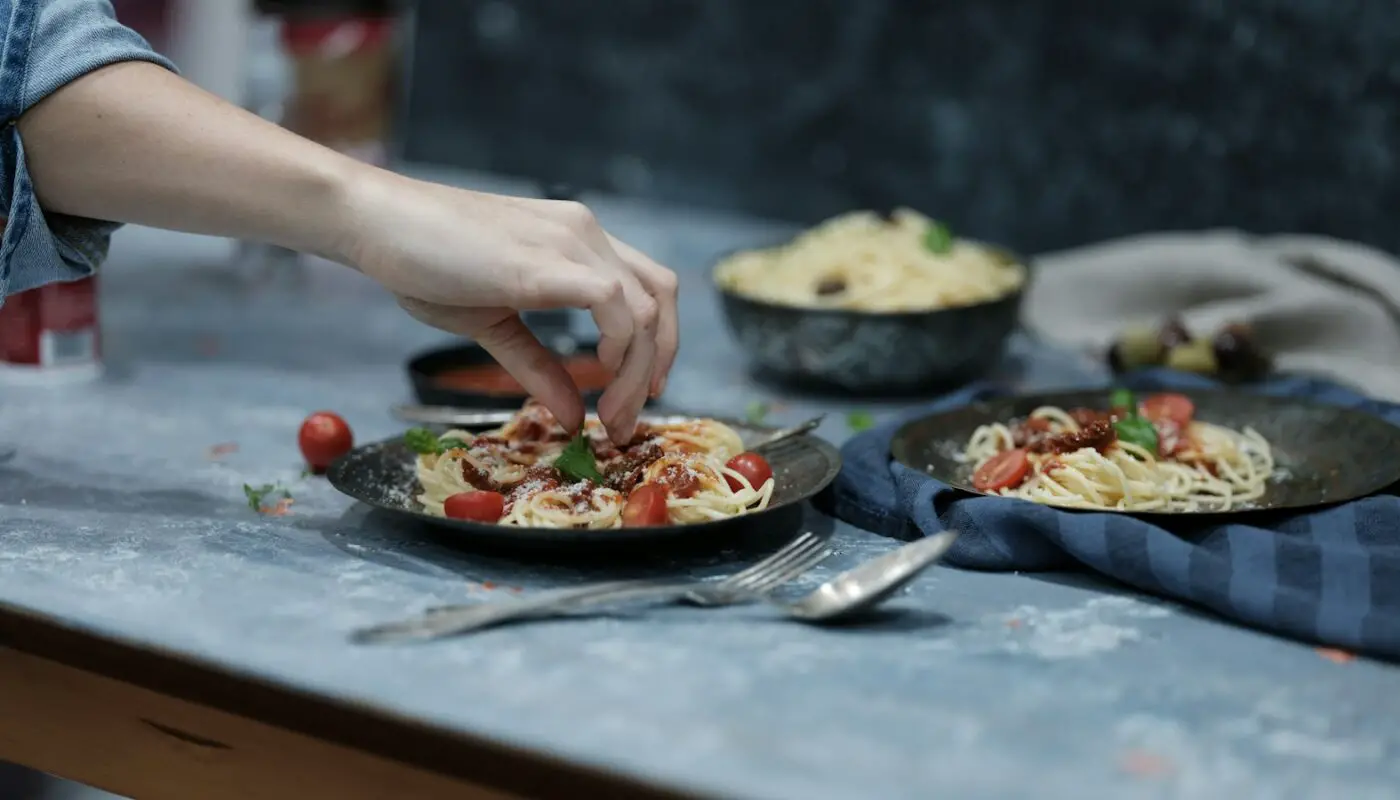Italian cuisine, renowned for its bold flavors and comforting dishes, has captivated food lovers around the world. The secret to its appeal lies not just in the quality of the ingredients but also in the mastery of certain fundamental techniques. Mastering Italian Cooking Techniques brings you closer to the soul of Italy’s culinary art.
Table of Contents
The Skills of an Italian Cook

Whether you’re an aspiring chef or a home cook, understanding these techniques can elevate your cooking and bring the authentic taste of Italy into your kitchen. From rolling the perfect pasta to simmering a flavorful soffritto, these skills form the basis of Italian cuisine.
1. Mastering the Art of Pasta Making
Pasta, a staple in Italian cuisine, varies greatly in shape and size across the country’s regions. The key to perfect pasta lies in its simplicity: quality flour mixed with water or eggs.
Begin by forming a well in the center of your flour, add your eggs or water, and gradually incorporate the flour from the sides. Knead the dough until it’s smooth and elastic, a process that develops the gluten and gives pasta its texture. Allow it to rest before rolling it out, either with a rolling pin or a pasta machine, to the desired thickness.
2. Perfecting Soffritto: The Flavor Foundation

Soffritto is a technique at the heart of many Italian dishes. This aromatic flavor base typically consists of finely chopped onions, carrots, and celery, cooked slowly in olive oil until they become soft and fragrant.
The trick is to cook the vegetables over a low heat, allowing them to sweat and release their flavors without browning too much. The transformation of these humble ingredients into a rich base sets the stage for the depth of flavor in soups, sauces, and stews.
You can check out the soffritto recipe from cucinabyelena.com to perfect your soffritto making skills.
3. The Secret to a Great Risotto
Risotto, a creamy Italian rice dish, requires attention and technique to execute well. The choice of rice is crucial – Arborio, Carnaroli, and Vialone Nano are popular choices due to their high starch content and ability to absorb liquids while still retaining a bite.
The first step is to toast the rice in a pan with a bit of oil or butter, which coats the grains and prevents them from breaking down too quickly. Then, gradually add warm broth, stirring constantly, allowing the rice to slowly absorb the liquid. This constant stirring is vital, as it releases the rice’s starches, giving risotto its signature creamy texture.
The process, typically taking about 18-20 minutes, results in rice that’s al dente with a rich, velvety sauce.
4. Slow Cooking for Stews and Braises

Italian cooking beautifully embraces the art of slow cooking, particularly in its stews and braises. Dishes like Osso Buco or a hearty Ragù rely on a gentle, prolonged cooking method to tenderize meats and meld flavors.
The key is to start with a robust soffritto, then brown your meat to develop depth of flavor. Once the meat is browned, herbs, wine, and stock are added. The dish is then left to simmer at a low temperature for several hours. This slow cooking process breaks down the tough fibers in the meat, resulting in a tender, flavorful dish.
Herbs like rosemary, thyme, and bay leaves, along with a good splash of wine, contribute complexity to the sauce.
5. The Art of Sauce Making
The heart of many Italian dishes lies in their sauces, each with its unique blend of ingredients and preparation methods. The most famous, perhaps, is the classic tomato sauce, which starts with high-quality tomatoes cooked down into a rich, flavorful base.
The key to a great sauce is balance, balancing acidity from the tomatoes with the sweetness of sautéed onions and the depth of garlic. For more complex sauces like Bolognese, the process involves simmering meat with tomatoes and a soffrito base for several hours to achieve a deep, rich flavor.
Whether you’re making a quick Pomodoro or a slow-cooked Ragù, remember to taste and adjust seasonings as you go. The sauce should complement the pasta, not overpower it, creating a harmonious dish that sings with each bite.
6. Baking the Perfect Italian Bread

Italian bread, like Ciabatta and Focaccia, is famous for its crispy crust and soft, airy interior. The secret to achieving this texture lies in the dough’s hydration and the baking process.
Start with high-quality flour and use a higher water-to-flour ratio than you would for other bread types. Kneading is crucial to develop gluten, which gives the bread structure and chewiness. Italian breads often undergo a long fermentation process, sometimes overnight, which enhances their flavor and texture.
When baking, a hot oven and a bit of steam help create that characteristic crispy crust. Focaccia, for instance, is often drizzled with olive oil and sprinkled with herbs before baking, infusing it with flavor as it cooks to golden perfection.
7. Utilizing Fresh Herbs and Seasonings
Fresh herbs are integral to Italian cooking, adding layers of flavor to dishes in a way that dried herbs can’t match. Basil, oregano, parsley, and rosemary are staples in the Italian pantry. It’s crucial to know how to use herbs effectively in cooking. For delicate herbs such as basil and parsley, it’s best to incorporate them towards the end of the cooking process to preserve their fresh flavor and vibrant color. Hardier herbs like rosemary and thyme can be added earlier in the cooking process as they withstand heat well and release their flavors over time.
Seasoning food correctly is also crucial in Italian cooking. A pinch of salt added at the right moment can enhance the natural flavors of the ingredients, while a dash of freshly ground black pepper can add a subtle heat to a dish.
Final Thoughts About Italian Cooking Techniques
Mastering these seven essential techniques is a gateway to the world of authentic Italian cooking. Each method, from rolling the perfect pasta to crafting a simple, fresh salad, is a testament to the Italian culinary tradition of simplicity, quality, and patience.
By understanding these fundamentals, you can bring the true flavors of Italy into your kitchen, creating dishes that are not only delicious but also steeped in history and culture. Italian cooking is as much about the love and care you put into the food as it is about the ingredients and techniques!



